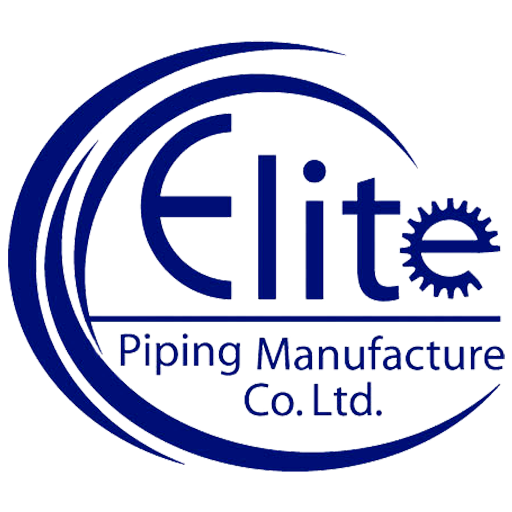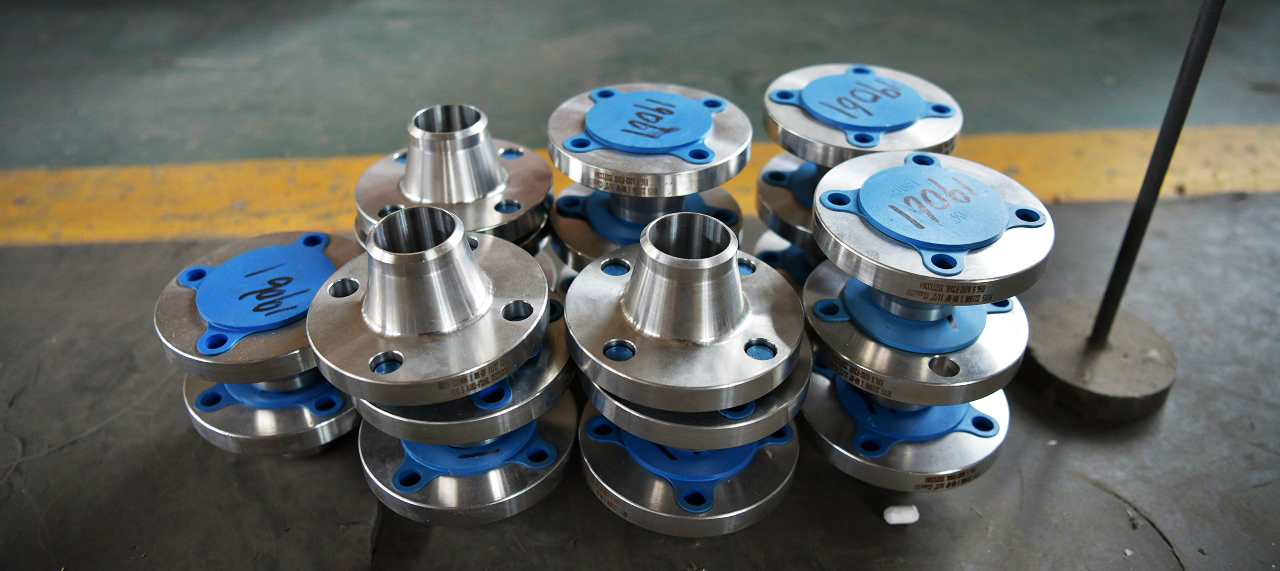Share this
Weld Neck Flange
When looking for the right flange for your piping system, you may want a kind of product that is reliable, durable, and easy to use. That’s where our weld neck flanges come in. Since the connection method of weld flange is to weld two flanges together, weld neck flanges are suitable for medium transportation under high-pressure and high-temperature conditions, such as pipe connections in petrochemical, coal chemical, refining, and other industries. If you are interested in our weld neck flanges, please contact us. For your reference, here are some detailed information about our welded neck flanges:
About weld neck flange appearance
- One of the key features of a weld neck flange is its tapered hub, which extends from the flange’s circular base to the bore. The hub gradually decreases in diameter as it approaches the bore, providing reinforcement and reducing stress concentrations at the weld joint;
- Surrounding the central bore, there is a raised flange face. This face provides a sealing surface where the gasket is placed to create a leak-proof connection when the flange is bolted to another flange or fitting;
- The thickness of the welding neck flange is larger, which can ensure the strength and sealing of the connection.
About weld neck flange types
- Raised face flangeis the most common type of weld neck flange. It has a raised face around the bore hole, which provides a mating surface for the gasket. The raised face helps to center the gasket and provides a smooth sealing surface;
- Unlike the raised face weld neck flange, the flat face weld neck flange does not have a raised surface around the bore hole. Instead, it has a flat face, which requires a full-face gasket for sealing. flat face weld neck flanges are used in applications where space is limited or where a smooth flow transition is required;
- Reducing weld neck flangesare designed to connect pipes of different sizes. They have a larger bore size on one end and a smaller bore size on the other end. Reducing weld neck flanges are used to transition between pipes of different diameters while maintaining a strong and leak-proof connection;
- Compact weld neck flanges are designed to reduce weight and size compared to standard weld neck flanges while maintaining the same level of performance. They are often used in offshore and subsea applications where space and weight are critical factors;
- Long weld neck flanges have an extended neck, which provides reinforcement and allows for easier welding. They are used in applications where there is a need to minimize stress concentration or where insulation thickness needs to be accommodated;
- Stainless steel weld neck flanges are a specific type of weld neck flange made from stainless steel, a corrosion-resistant alloy known for its strength and durability. These flanges are commonly used in various industries, including chemical processing, food and beverage, pharmaceuticals, petrochemicals, and oil and gas;
- Carbon steel weld neck flange is a type of pipe flange designed to be welded to the end of a pipe, providing a strong and durable connection for various industrial applications;
- Socket weld flange is a type of flange used to connect pipes, valves, and other equipment in piping systems. It features a socket or recessed area that allows the pipe to be inserted directly into the flange. The pipe is then welded to the flange through the socket using fillet welding on the outside of the flange;
- Weld neck flange is a type of flange used to connect pipes, valves, and other equipment in piping systems, renowned for its robustness and reliability. Featuring a long, tapered neck that is welded to the pipe, weld neck flanges distribute stress evenly, making them suitable for high-pressure and high-temperature applications. They typically have a raised face to provide a flat sealing surface for gaskets, ensuring a tight and leak-proof connection. Available in various materials, sizes, and pressure ratings, weld neck flanges are widely used across industries such as oil and gas, chemical processing, and power generation, offering a dependable solution for secure pipe connections in critical environments.
About welded neck flange materials
Our weld neck flanges can be made from a variety of materials, including carbon steel: A105, SS400, SF440 RST37.2, S235JRG2, P250GH, C22.8, stainless Steel: F304 F304L F316 F316L 316Ti, Copper, etc.
About welding flange standards
Our welding flanges are typically designed to conform to industry standards, such as ASME B16.5 or ASME B16.47, and can be customized to meet specific application requirements, including ANSI, JIS, DIN, BS4504, SABS1123, EN1092-1, UNI, AS2129, GOST-12820.
About welded flange sizes and pressure ratings
Our weld neck flanges welding are available in DN15-DN2000 and pressure ratings are ANSI class 150, 300, 600, 1500, 2500, DIN PN6, PN10, PN16, PN25, PN40, PN64, PN100, PN160.
About welding flanges applications
In addition to the pipe connections in chemical, petroleum, and natural gas mentioned above, our welding flanges can also be used for you in oil and gas transmission, marine environment, power, heating, and other projects.
About advantages of weld neck flange
1. Good sealing
The structure of our welded flange is particularly suitable for occasions with high pressure and sealing requirements, and its sealing performance is better than that of ordinary flanges. Compared with traditionally used gaskets, the sealing performance of welded flanges is more reliable and less prone to leakage and failure;
2. High-temperature performance
Our weld neck flanges are made of high-temperature materials and have strong high-temperature resistance. In high-temperature and high-pressure environments, welded flanges have stable performance and are not easy to break;
3. Sturdy and durable
The body and weld neck of our welding flanges are made of high-strength materials, which have good corrosion resistance and thermal stability and can be used for a long time.
About weld neck flange price
Weld neck flanges are relatively expensive compared to other types of flanges. However, we have our own factory and the most professional production and procurement channels to ensure fair prices and excellent value for money.
About weld neck flanges manufacturers
1. Advanced science and technology
All of our weld neck flanges are forged. The forging process includes the following processes, that is, selecting high-quality steel billets, heating, shaping, and cooling after forging. The advantage of forged flanges is that the internal structure is uniform, the casting has no pores, and there are no harmful defects. For your reference, here are several producing machines:
(1) . Punching machine
A punching machine is a specialized piece of equipment designed to precisely create bolt holes in the neck of the welding flange for secure attachment to pipes or other components in a piping system. These machines typically feature a sturdy frame housing a ram, punch, and die set specifically configured to match the dimensions and hole patterns required for weld neck flanges. Utilizing hydraulic or mechanical power, punching machines for weld neck flanges deliver accurate and consistent punching operations, ensuring proper alignment and fitment of the flange to the piping system. With their ability to automate the punching process and accommodate varying flange sizes and specifications, these machines play a critical role in the efficient fabrication of weld neck flanges for diverse industrial applications;
(2) . TIG welding machine
TIG welding machine, a precise and versatile welding process machine, finds widespread application in the fabrication of weld neck flanges. Utilizing a non-consumable tungsten electrode and an inert gas shield, typically argon, TIG welding delivers immaculate welds, crucial for ensuring the integrity and leak-proof nature of weld neck flange connections in various industrial sectors. This method enables welders to meticulously fuse the flange to the pipe, ensuring optimal alignment and structural integrity. With its ability to provide high-quality, aesthetically pleasing welds while minimizing distortion and maintaining material properties, TIG welding stands as the preferred choice for welding welded neck flanges, meeting stringent industry standards and performance requirements with precision and reliability;
(3) . Hydraulic radial drill
A hydraulic radial drill can be a valuable tool for machining and drilling operations on weld neck flanges. These drills feature a radial arm that can be positioned in various directions, offering flexibility and precision in drilling holes and machining features on large and heavy components like weld neck flanges. Hydraulic radial drills are equipped with hydraulic systems that provide the necessary power and control to move the drill arm and apply the cutting force efficiently. With their ability to handle large workpieces and perform drilling operations at different angles and positions, hydraulic radial drills are well-suited for tasks such as drilling bolt holes, tapping threads, and machining facing surfaces on weld neck flanges, contributing to the efficient and accurate fabrication of these critical components in piping systems.
2. Strict inspection
We have quality control during the manufacturing process. All welding flanges undergo strict process inspection at every stage of the production process, from raw material handling to finished product shipping. They are visually inspected for compliance with our specifications and inspected and tested in accordance with applicable ASTM, ASME, MSS, DIN, EN, and JIS codes and standards. Upon request, you can also invite an officially certified testing agent to witness the inspection procedure. Here are several inspection equipment:
(1) . Chemical analysis lab
A chemical analysis lab can focus on examining the composition and properties of the materials used in manufacturing weld neck flanges, as well as ensuring their adherence to industry standards and specifications;
(2) . PMI
PMI (Positive Material Identification) is a crucial process in the manufacturing and quality assurance of weld neck flanges. It involves verifying the chemical composition of the material used in the flanges to ensure it meets the required specifications and standards;
(3) . Metallurgical microscope and evaluation system
A metallurgical microscope and evaluation system is a specialized tool used to examine the microstructure of the weld and base metal in the welded neck flanges. This system is crucial for evaluating the quality of welds, identifying defects, and assessing the integrity of the weld joint.
3. Easy to Install
The weld neck design of our flanges makes it easy to attach to pipes using welding techniques. This ensures that the flange remains securely attached to the pipe, even in applications where there is a lot of movement or vibration;
4. Customized on demand
Our weld neck flanges welding can be customized on demand including construction, electric power, petroleum, chemical industry, pipelines, etc;
5. Pack and delivery on time
Our factory will complete production as soon as possible and deliver welded neck flanges on time according to your order, ensuring that your receiving is not delayed.
6. After-sales guarantee
To protect your consumer rights and welded neck flanges quality, we have a professional team to solve your after-sales issues.
We Elite Piping Manufacture Co., Ltd is a manufacturer and supplier of welded neck flanges. Our factory has a strong technical force supported by 380 employees, 122 Professionals, 16 Senior Engineers, and 28 Engineers and well-equipped with 280 advanced and updated equipment/processing machinery and capable of producing weld neck flanges welding according to International Manufacturing Standards including ANSI, ISO, API, JIS, DIN, BS, MSS, GOST, etc. and non-standard flanges according to the customized technical drawings. Our value is improving with customers’ demands. We are aware that our satisfaction is from customers’ long-term trust. If products that meet customers’ demands were not provided by our company, we would lose customers’ trust and fail to develop continuously. Analyzing the market achieving great success.
As shown in the picture below, we have successfully exported our weld neck flanges to more than 25 countries throughout the world, and over a period we have built an enviable reputation based on our commitment to quality.
Our customers are mainly from oil and gas, power plants, fertilizers, petrochemicals, metallurgy, shipbuilding and related industries.
Thanks for your reading. If you are interested in our weld neck flanges or have any other questions about welding flanges, please contact us.

